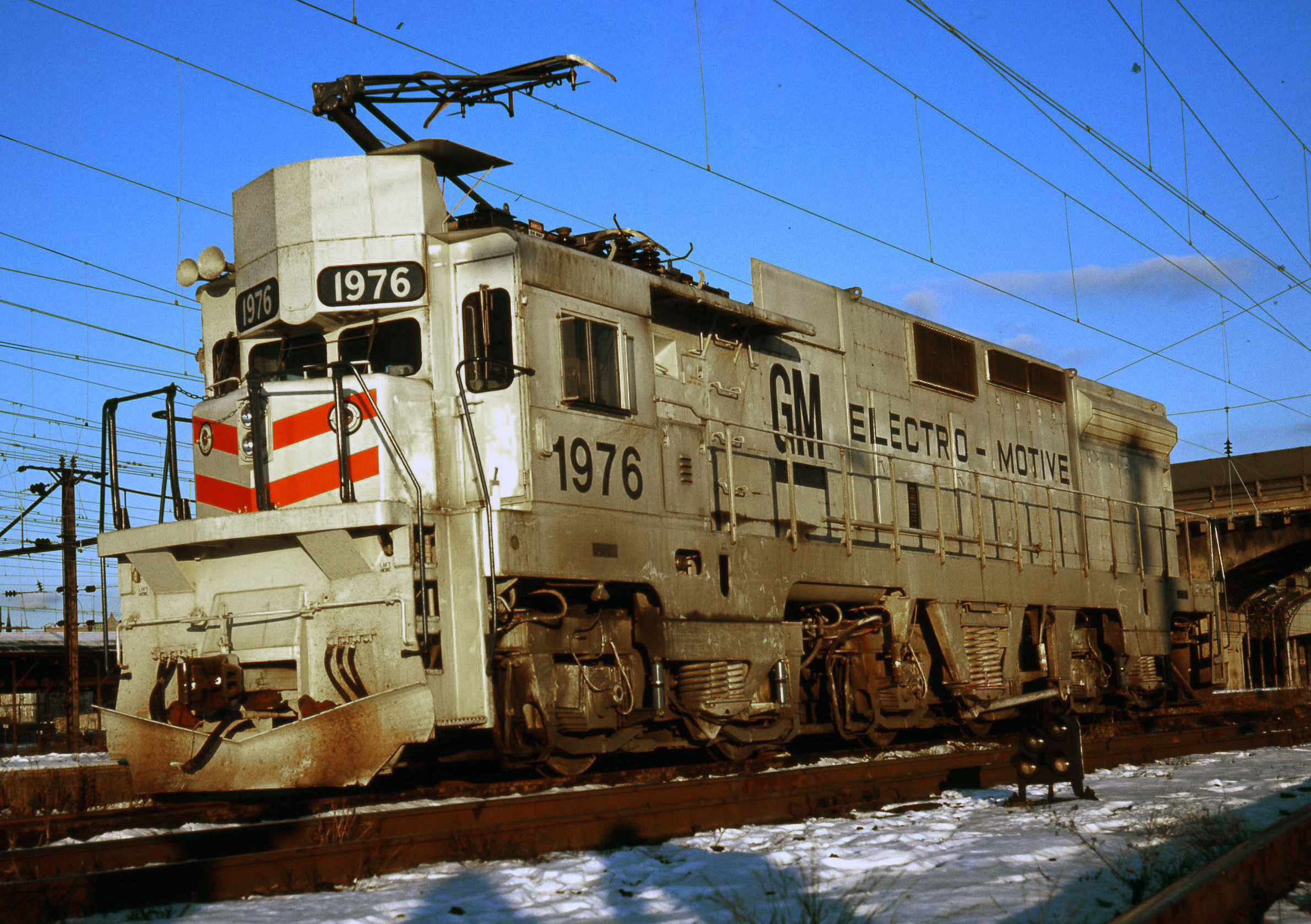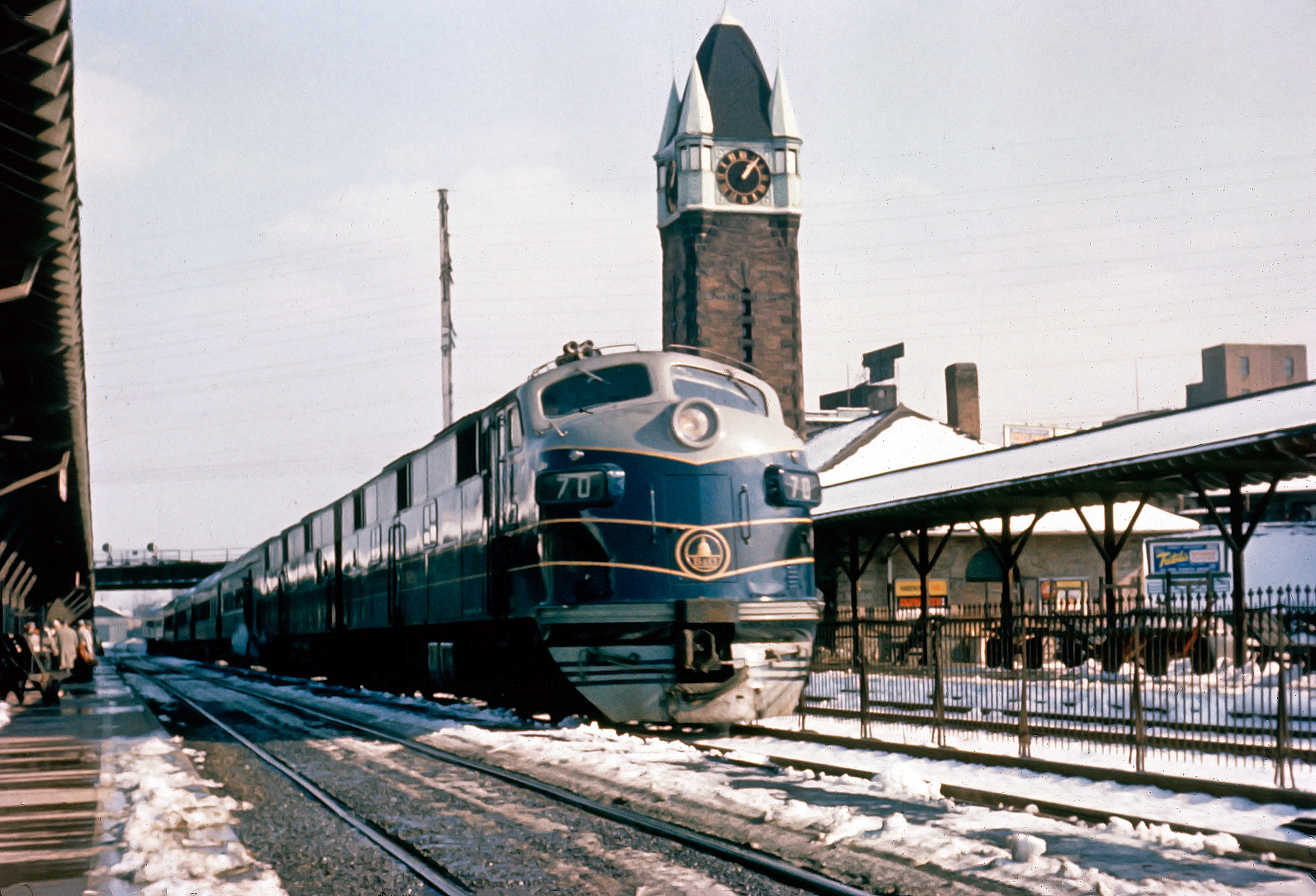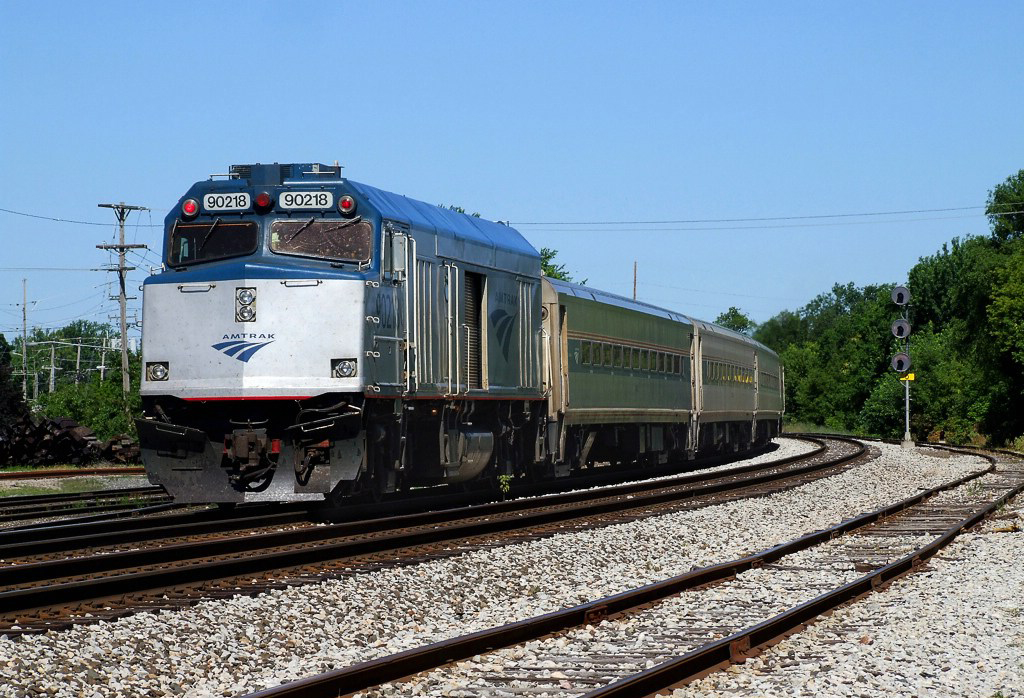"GM10B": A High-Speed Freight Electric
Last revised: December 16, 2024
By: Adam Burns
Born in the late 1970s, Electro-Motive's GM10B was a daring leap into the world of electric locomotives for this General Motors subsidiary, marking an adventurous bid to provide an efficient, economical, and sustainable alternative to the conventional diesel-electric.
Unfortunately, despit its successful test on Conrail - the only freight carrier at the time still operating electric motive power - the remarkable locomotive proved to be a concept too far ahead of its time.
As a result, only one prototype was ever made - numbered 1976 - leaving its revolutionary features hidden in the annals of railroad history.
However, thanks to its productive collaboration with ASEA, EMD and the Swedish builder went on to produce a successful line of passenger motors for Amtrak, the AEM-7. After sitting gutted and derelict at La Grange for several years the GM10B, and its GM6C countepart, were both scrapped in the mid-1980s.
Photos
 The GM10B, an Electro-Motive design (in conjunction with Sweden's ASEA) intended for high-speed freight service on the Northeast Corridor. It is seen here at Harrisburg, Pennsylvania in early 1977. Jerry Custer photo.
The GM10B, an Electro-Motive design (in conjunction with Sweden's ASEA) intended for high-speed freight service on the Northeast Corridor. It is seen here at Harrisburg, Pennsylvania in early 1977. Jerry Custer photo.Development
In an ironic twist, just as the Milwaukee Road was completing the shutdown of its western electrification (June, 1974) - the longest end-to-end section of energized rails in the nation - the United States experienced a crippling oil embargo in 1973 which dramatically raised fuel prices.
As a result, some railroads began exploring the concept of electrifying key sections of main line in an effort to offset this issue. At the time, Conrail remained the last system still operating freight trains electrically.
In addition, with EMD not only the leader in locomotive manufacturing but also riding a wave of recent successes - notably the GP35, GP38 series, GP40 series, and SD40 series - the builder felt it should test the electric market.
Completed in July, 1976 the GM10B was the second testbed variant, following the six-axle, 6,000-horsepower GM6C which had been built a year prior.
The locomotive, with its unique B-B-B trucks, was intended for high speed intermodal freight service along the Northeast Corridor utilizing the former PRR's 11 kV 25 Hz overhead caternary.
While the GM6C utilized a standard SD40-2 frame the GM10B boasted its own custom design and intresting B-B-B trucks. As Brian Solomon notes in his book, "EMD Locomotives," while this design was unique in America it was rather common in Europe (Italy and Spain), Japan, and Yugoslavia.
While EMD provided the locomotive's overal carbody, trucks, and auxiliary equipment, ASEA (Allmänna Svenska Elektriska Aktiebolaget) supplied the electrical equipment.
The GM10B was an engineering marvel in terms of its physical attributes, too. Built with a rugged steel frame, the GM10B was characterized by its tremendous horsepower, lack of a traditional prime mover, and surprisingly smooth ride.
When in service, the motor tended to operate the former Harrisburg line between the state capital and Kearny, New Jersey, hauling high-value and intermodal freights at high speed during the overnight hours.
The locomotive was also capable of handling poor track with ease. As Trains Magazine notes, the motor could negotiate areas with low joints or rotting ties without the head-end crew realizing while the trailing cars would rock and sway over these poorly maintained locations.
Drawbacks
The electric traction allowed the locomotive to produce no direct emissions, providing an 'earth-friendlier' prospect. However, the infrastructure necessary to sustain such a system, especially outside the NEC lines where the catenary was absent, made it unattractive for the North American railroads.
Despite the GM10B's highly innovative and futuristic design, the locomotive failed to revolutionize the American rail industry as EMD had hoped.
For Conrail, the carrier faced the immediate issue of resurrecting freight service throughout the Northeast that had been in severe decline since Penn Central's 1968 creation. It did not have the resources - or time - to fully assess new electric motive power.
In addition, by the time it launched on April 1, 1976 Amtrak already fully owned the NEC, except for sections under the by Massachusetts Bay Transit Authority's and Connecticut Department of Transportation's jurisdiction.
As a result, Amtrak began implementing surcharges on electricity and car movements for freight service. To get around this, Conrail moved as much freight as possible off the busy NEC and onto parallel routes or other existing ex-PRR electrified lines.
The GM10B was indeed ahead of its time, both in terms of technology and infrastructure requirements, and the North American rail industry was not prepared to adapt to this radical change.
The rail networks lacked the overhead catenary systems required for the GM10B’s power source, and the implementation of such a system was deemed costly, labor-intensive, and impractical.
Production Roster
| Owner | Road Number | Order Number | Serial Number | Date Built |
|---|---|---|---|---|
| EMD | 1976 (renumbered 4976) | 75607 | 75607-1 | 8/1976 |
Data Sheet and Specifications
| Entered Production | 7/1976 (Demonstrator #1976) |
| Years Produced | 7/1976 |
| Model Specification | GM10B |
| Current | 11 kv, 25 hz |
| Horsepower | 10000 |
| Carbody Styling | GM |
| Length (Between Coupler Pulling Faces) | 76' 4" |
| Width | 10' 3 1⁄8" |
| Height Above Rail Head | 15' 10" |
| Weight | 394,500 Lbs |
| Trucks | B-B-B |
| Truck Type | EMD |
| Truck Wheelbase | 13' 7" |
| Wheel Size | 50" |
| Traction Motors | ASEA LJH108-3 (8) |
| Traction Alternator | D79MA75 (EMD) |
| Tractive Effort Rating | 114,000 Lbs (Starting): 82,000 Lbs @ 37 mph (Continuous) |
Legacy
Today, the GM10B is remembered for its audacity more than its success. A forerunner in the concept of high-speed electric locomotion, the GM10B may not have transformed the industry, but it certainly left an indelible mark.
EMD’s gamble pushed the boundaries of traditional railroad engineering and showcased the potential of electric locomotives. The GM10B remains a jewel in the crown of locomotive history, a testament to pioneering thought and an enduring symbol of might-have-been.
Sources
- Cook, Preson. Testing EMD electric freight locomotives. Classic Trains Magazine, Kalmbach Publishing Company (May 31, 2022). Retrieved March 15, 2024. https://www.trains.com/ctr/railroads/locomotives/testing-emd-electric-freight-locomotives/.
- Marre, Louis A. and Pinkepank, Jerry A. Contemporary Diesel Spotter's Guide, The: A Comprehensive Reference Manual To Locomotives Since 1972. Milwaukee: Kalmbach Publishing Company, 1989.
- Solomon, Brian. Electric Locomotives. St. Paul: MBI Publishing, 2003.
- Solomon, Brian. EMD Locomotives. Minneapolis: MBI Publishing Company, 2006.
Recent Articles
-
Guide To Amtrak/Passenger Trains In New Jersey
Apr 10, 25 09:40 PM
This guide highlights passenger train services currently available throughout the state of New Jersey. -
Rio Grande 4-6-6-4 Locomotives: Specs, Roster, Photos
Apr 10, 25 12:47 PM
The Rio Grande owned some large wheel arrangements, including the 4-6-6-4s. Interestingly, the railroad was never satisfied with these engines. -
Guide To Amtrak/Passenger Trains In Michigan
Apr 10, 25 12:06 PM
Michigan offers a variety of passenger train services, allowing travelers to discover the state's beauty and charm in a relaxed and comfortable manner. Learn more here.


